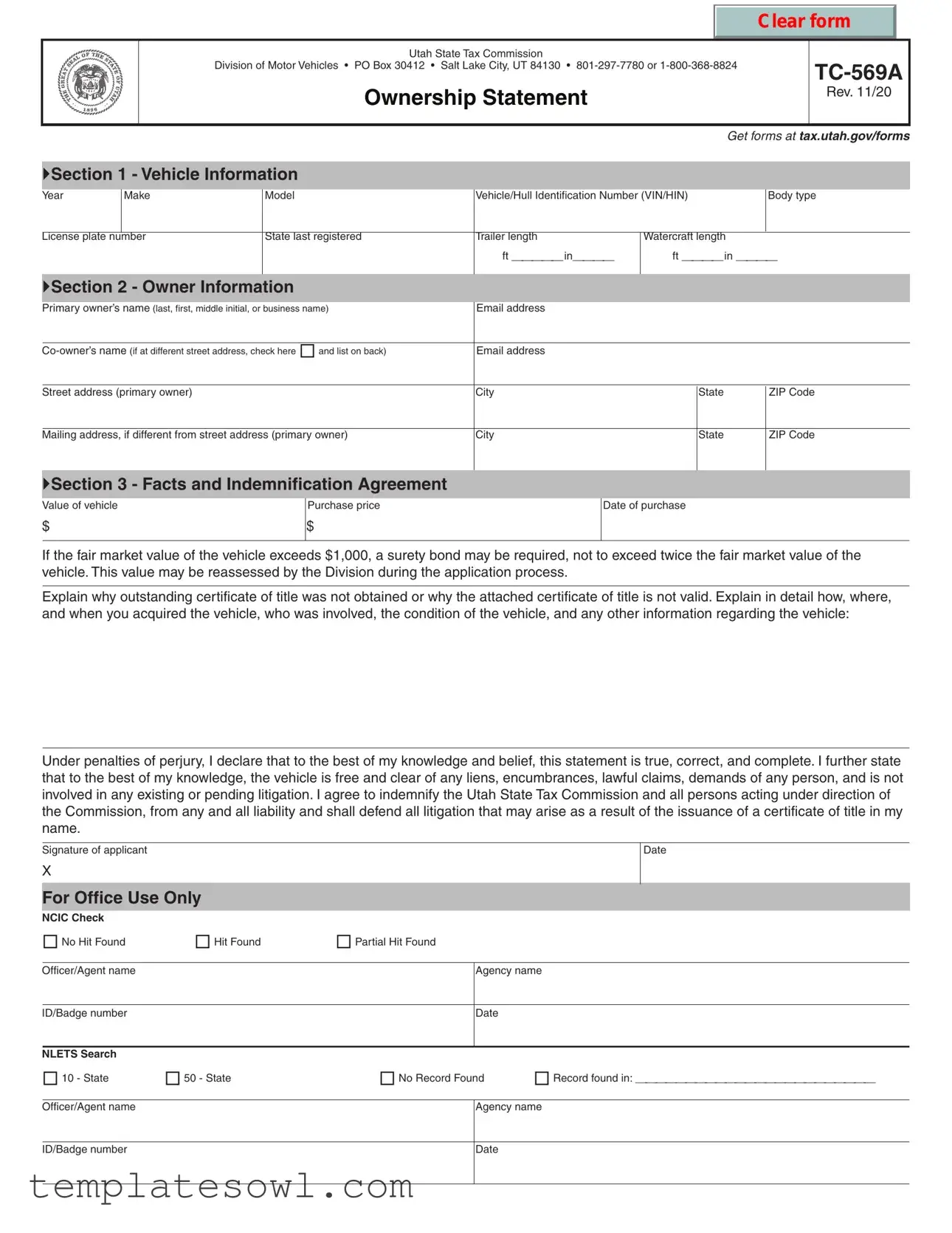Completing the TC-569A form correctly is essential for a smooth processing of vehicle ownership in Utah. Unfortunately, many individuals make common mistakes that can result in delays or complications. One of the most prevalent errors occurs in the Vehicle Information section. Here, it's crucial to accurately enter the Vehicle Identification Number (VIN) or Hull Identification Number (HIN), as even a single incorrect digit can lead to significant issues.
Another frequent mistake involves the entry of the vehicle's value. Applicants sometimes state an incorrect purchase price or fail to include necessary details about the vehicle's condition. This omission can lead to complications, especially if the vehicle’s fair market value exceeds $1,000, which may trigger the need for a surety bond.
In the Owner Information section, many individuals neglect to verify that all names and addresses are complete and accurate. For those with co-owners, it’s important to note any differing addresses. Forgetting to check the box indicating a different street address for the co-owner can create confusion and delay.
The section explaining why a certificate of title was not obtained is often filled out insufficiently or without clarity. Applicants should provide a comprehensive explanation, detailing the circumstances surrounding the acquisition of the vehicle. Failing to provide thorough information might raise questions and complicate the overall review process.
Additionally, signatures and dates are sometimes missing or incorrectly filled in. The TC-569A form requires that the applicant signs and dates the form; neglecting to do so may result in automatic rejection of the application. A clear, legible signature is essential to validate the declarations made in the document.
Another oversight involves not attaching the necessary documents. Individuals often forget to include relevant paperwork, which can range from prior registration details to documentation proving the absence of liens. Assembling all required documents prior to submission can prevent unnecessary delays.
When filling out the application, some may rush through the indemnification agreement section. This careful agreement assures the state that the applicant holds no hidden claims against the vehicle. It’s important to understand that this part is not just a formality; it holds legal significance.
One of the less obvious mistakes involves failing to review the completed form for accuracy before submission. Reading through all the information to verify it matches accompanying documentation can make a critical difference. Even minor discrepancies can lead to hurdles in processing.
Lastly, individuals sometimes overlook the importance of providing contact information, such as email addresses, in the Owner Information section. Without up-to-date contact methods, reaching out for additional information or clarification can become difficult, hindering the entire process of title issuance.
A thorough review of these common mistakes can help applicants complete the TC-569A form accurately, ensuring a seamless title acquisition experience. Attention to detail in filling out the form may seem tedious, but it lays the foundation for a successful transaction.

